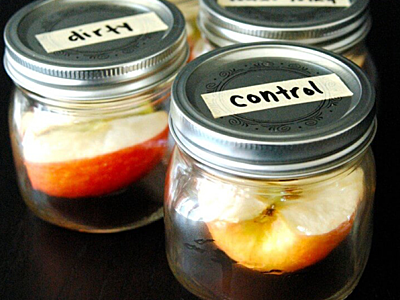

Handwashing for Kids: Making it Fun & Easy
Six ideas to make one of the most annoying chores of childhood less dull.
This might come as a shock, but kids don’t always think about washing their hands. As any teacher can tell you, singing Twinkle, Twinkle, Little Star, or Happy Birthday to You twice through is only a good trick to hold their interest the first time. New state handwashing mandates for American daycares, schools, and summer camps call for children to wash their hands as often as once every hour of the day.
While it’ll take a generation to see if all this handwashing creates a nation of obsessive-compulsives who get twitchy around presents and cake, nobody can debate the importance of handwashing. The problem for teachers and childcare providers is making it something kids actually want to do. Here are some tips and resources that might be able to help.
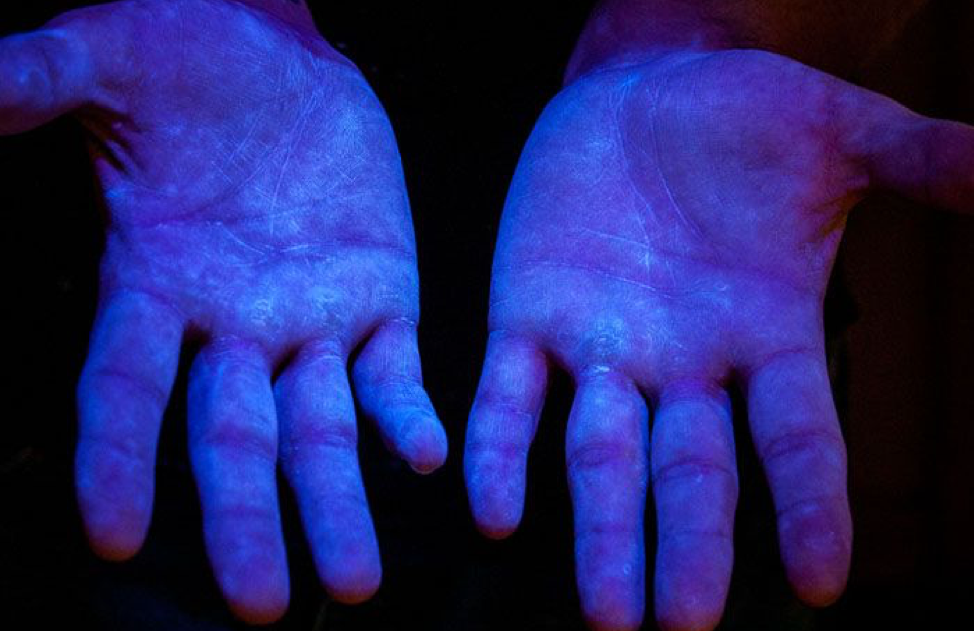
SHOW DON’T TELL
Source (picture above): glogerm.com
University of Utah Health pediatric physician, Dr. Cindy Gellner, recently offered a bunch of great tips to get preschoolers and toddlers excited about lathering up. Two of the best-involved hobby shop glitter and, the other, a special gel to help show kids how well they wash their hands.
GloGerm™ has been used to teach handwashing since 1968. Let children rub a quarter-sized drop of GloGerm oil on their hands and then—after wiping off the excess with a paper towel—have them wash their hands as they normally would. Then use a UV light in a dark room to show exactly where their hands are still dirty.
Don’t have a “black light”? Gellner recommends using glitter. “Kids love glitter,” she says. “Put a little glitter on their hands and then let them go play. A little bit later have them go see where the glitter is throughout the room.” This trick shows children how easy hand germs can spread while also showing how hard it actually is to remove the glittery “germs” when it’s time to wash.
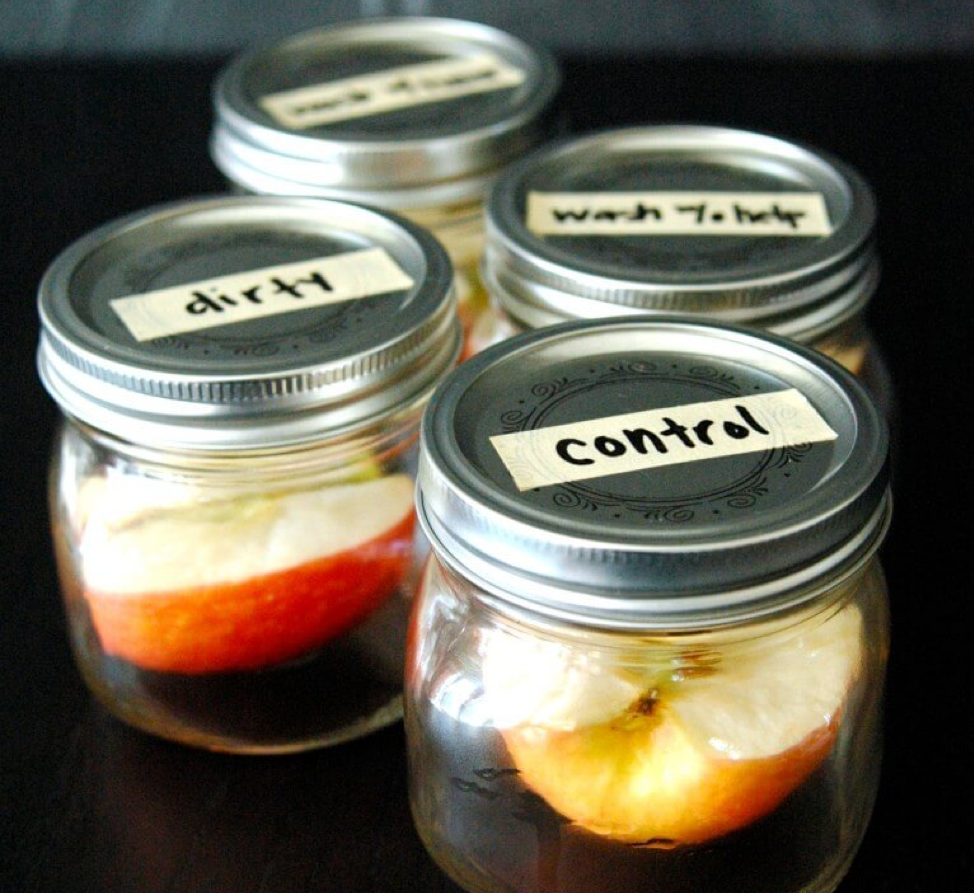
GROW SOME GERMS
Source (picture above): playdoughtoplato.com
Another twist on showing children the icky power of the invisible germs and why they need to wash their hands comes by way of the blog Playdough to Plato. This simple science experiment requires two apples and four canning jars. Cut one apple in half, sealing each half in its own jar without touching it. In the other jars, place two other apple halves—one handled by a child with dirty hands and the other handled briefly after they washed. This helps children see the difference between regular rotting apples and ones you put germs on.
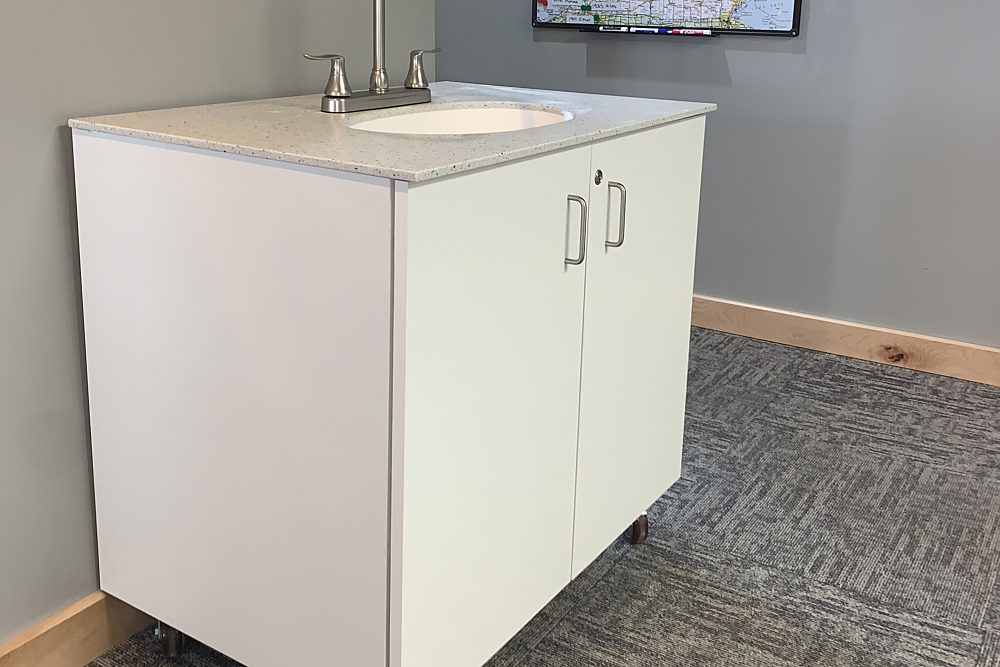
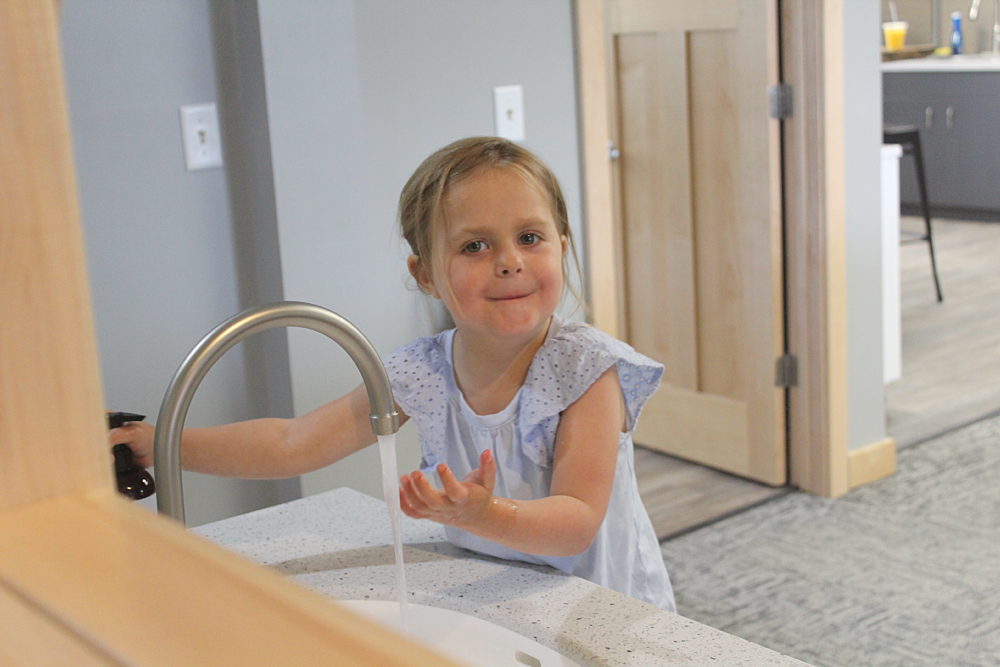
SET UP A HANDWASHING STATION
If you expect children to do it regularly, handwashing shouldn’t be a struggle. Take the strain out of the process, says the disinfecting experts at Lysol®, by setting up a child-friendly handwashing station. Be sure they have easy access to a stepstool and that all handwashing supplies are in easy reach. “Let young students choose their own supplies, like fun soaps (see below) and special paper towels for drying their hands afterwards, so they can really take pride in washing their hands all by themselves.”
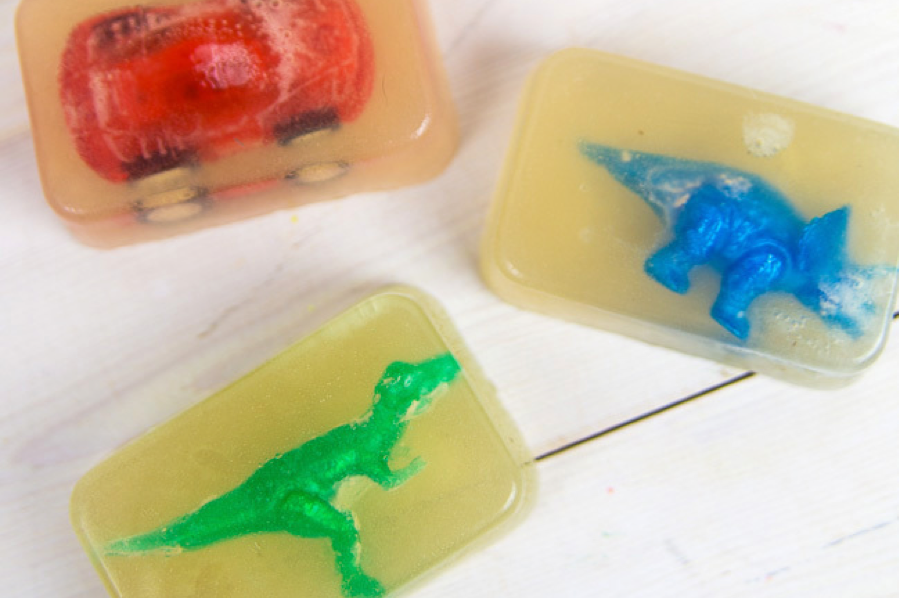
MAKE SOME SOAP
Source (picture above): kidsactivityblog.com
Studies have shown that there is no added benefit for people outside the medical profession using soaps containing antibacterial ingredients compared with using plain soaps. See here. So why not add a little more fun and “ownership” of the handwashing process for children by letting them make their own?
Homemade “Treat Soap” is a great idea from KidsActivities.com. It involves a small car, dinosaur, or other toy you encase in soap, which encourages children to wash more so they can get to the “treat” inside.
Another great homemade soap idea is “squishy soap,” a kid-friendly recipe from the blog Momma.Poppa.Bubba. This fun recipe uses common ingredients found around the house. It produces a soap that’s somewhat stretchy and can be used like Playdough, too.
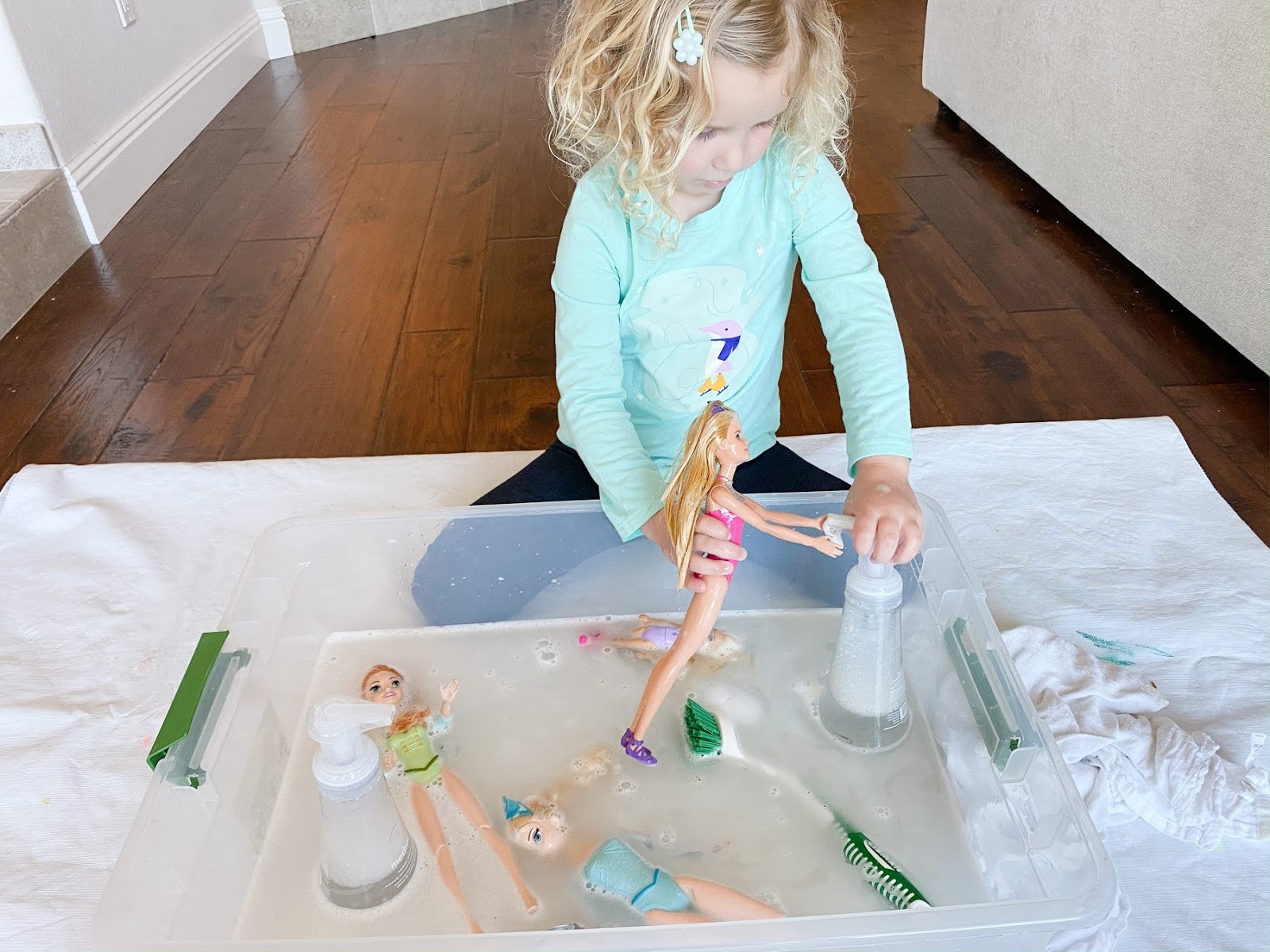
TEACH HANDWASHING IN A SENSORY BIN
Source (picture above): toddlerapproved.com
Along with some creative and fun handwashing activities, the blog Toddler Approved brings teachers a genius idea called the “sensory bin.” Using a plastic bin, warm water, soap, and a couple of dolls, the sensory bin creates a fun environment for toddlers and preschoolers to learn about and practice proper handwashing.
Most children like playing in the water anyway. Adding toys to the soapy mix means they’re liable to want to play and wash their hands in the sensory bin more often than they otherwise would at a sink.
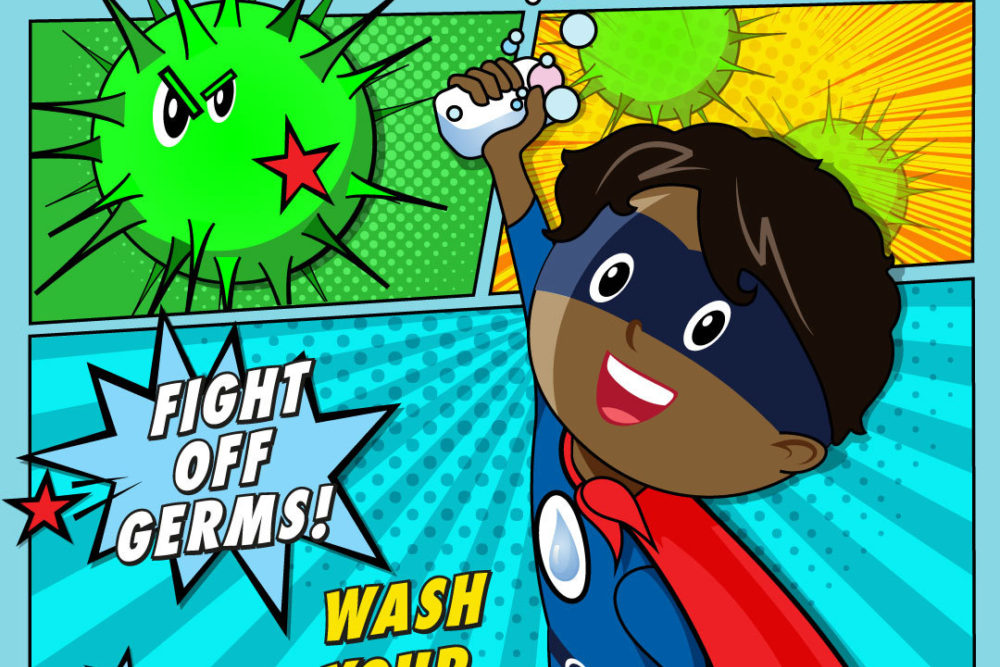
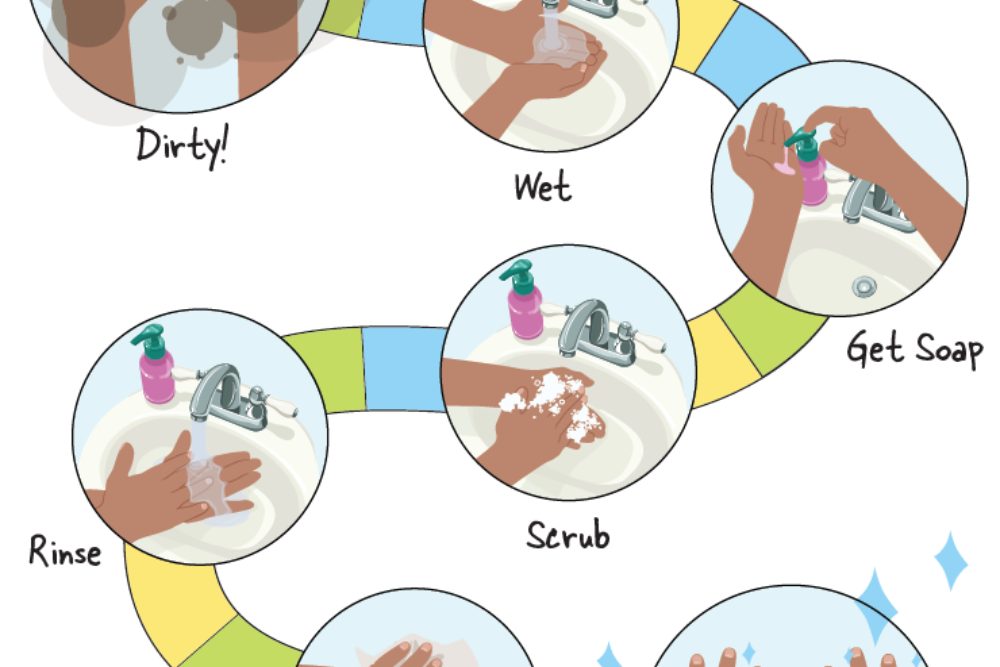
HANG HANDWASHING POSTERS, CHARTS, & GAMES
Source (picture above): cdc.gov
One easy way to make handwashing fun is to set up a chart with key times children should be washing their hands throughout the day. Give them stickers or gold stars to place on the chart after every washing.
Along with fun charts and poster games (like bingo) to post around your handwashing station, the Centers for Disease Control and Prevention offers anyone free, printable posters to help raise awareness about handwashing for children. Colorful and fun, these posters are available in multiple sizes and languages. Click here to check them out.
